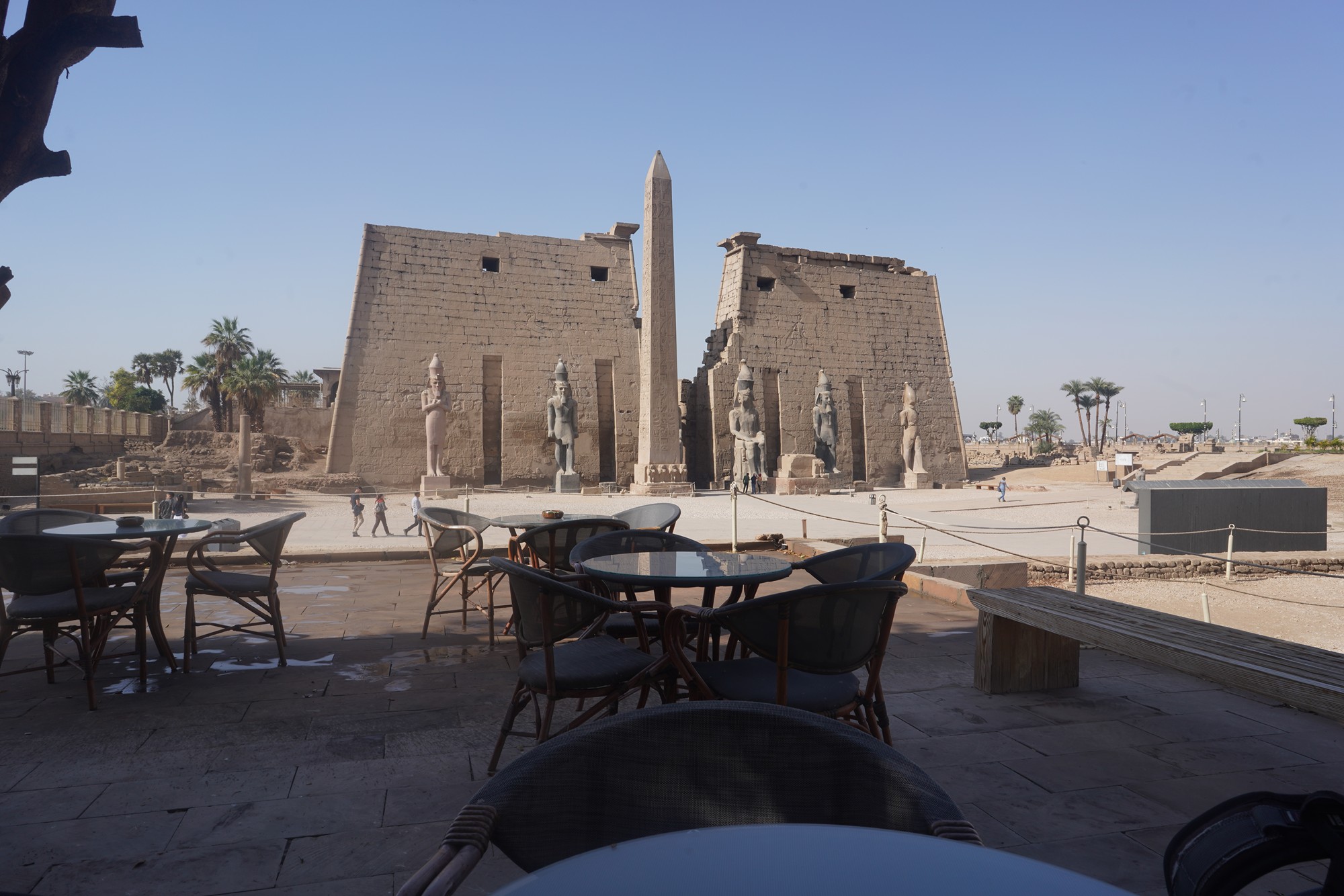Luxor Temple, Luxor, Egypt
Luxor Temple is an ancient Egyptian temple complex located on the east bank of the Nile River in Luxor, a city in southern Egypt. 842
Luxor Temple: Luxor City, Luxor, Luxor Governorate 1362501, Egypt
Date Picture Taken: March, 2024
I took a one-day tour covering the city’s West and East Banks during my visit to Luxor. However, I felt I needed more time to explore the East Bank properly.
Hence, I hired a driver for a day through my hotel. The driver took me to the Luxor Temple, the Luxor Museum, and the Karnak Temple.
I began my tour with a visit to the Luxor Temple. I had already visited this site before and had posted about it on my first visit. Therefore, I may be repeating myself while describing this location again.

This road with the sphinx on the sides is in front of the Luxor Tower.


The temple was constructed during the New Kingdom, specifically during the reign of Amenhotep III (1390–1352 BCE) and later expanded by other pharaohs, including Tutankhamun, Horemheb, and Ramses II.

The Luxor Temple, along with the Karnak Temple, was dedicated primarily to the Theban Triad—Amun-Ra, Mut, and Khonsu. It served as a venue for various religious ceremonies, including the Opet Festival, and was an important center for worship and political activities during ancient Egypt’s New Kingdom period.

The temple is connected to the Karnak Temple by a long avenue lined with sphinx statues, creating a ceremonial pathway.


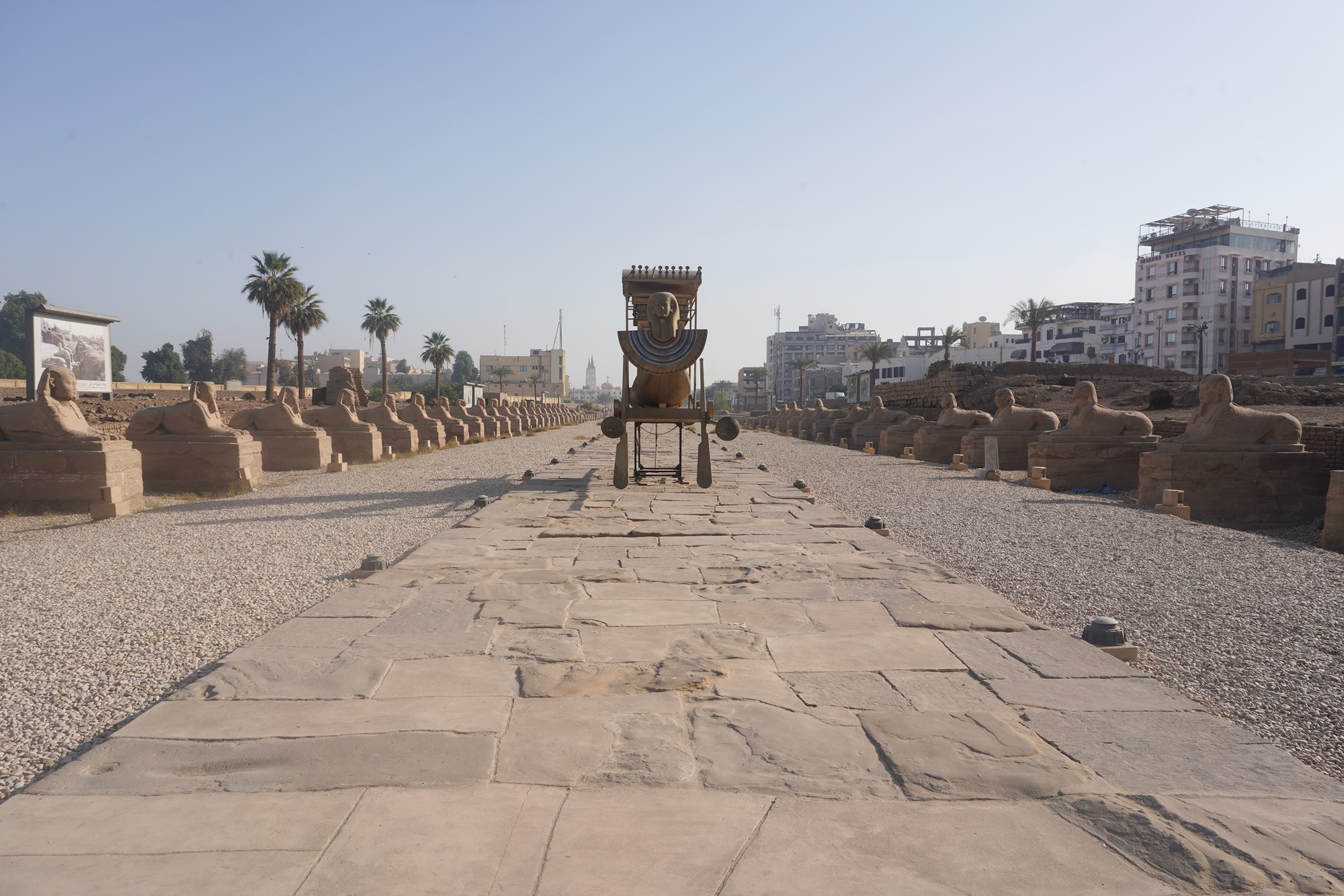


Luxor Temple has two massive entrance pylons, towering structures that serve as gateways to the temple. These pylons are adorned with intricate carvings and hieroglyphs.





The back side



The first courtyard after the main gate


The entrance leads to a large open courtyard surrounded by a colonnade of pillars with open papyrus capitals. The courtyard was used for various ceremonies and gatherings.


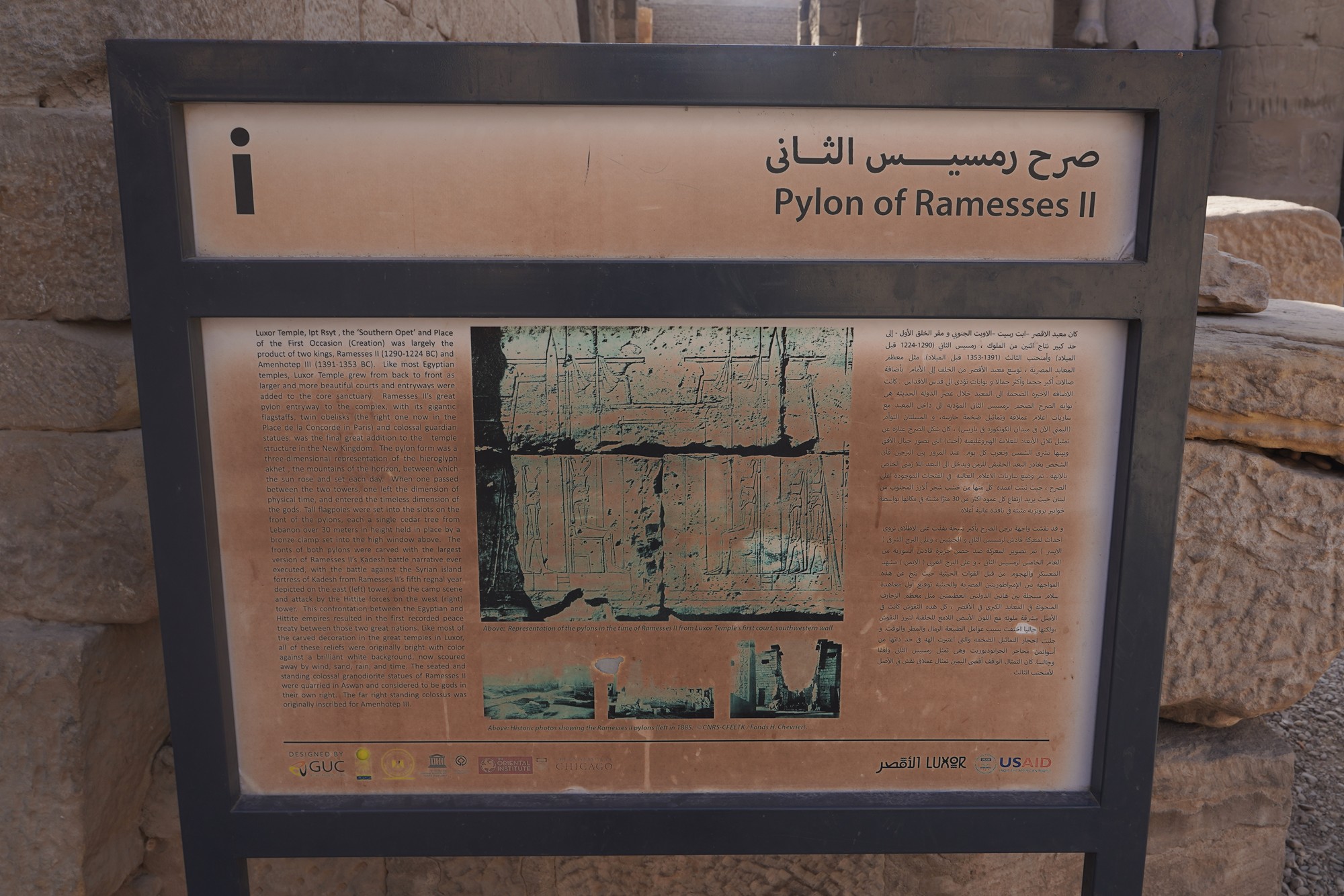
The front left

The front right

The left side

The front right

The right side




Beyond the courtyard, there is a colonnade hall with numerous columns featuring intricate carvings and reliefs depicting scenes from the lives of the pharaohs, religious ceremonies, and mythological stories.

There are two sitting statues before the columns, one on the left and right.


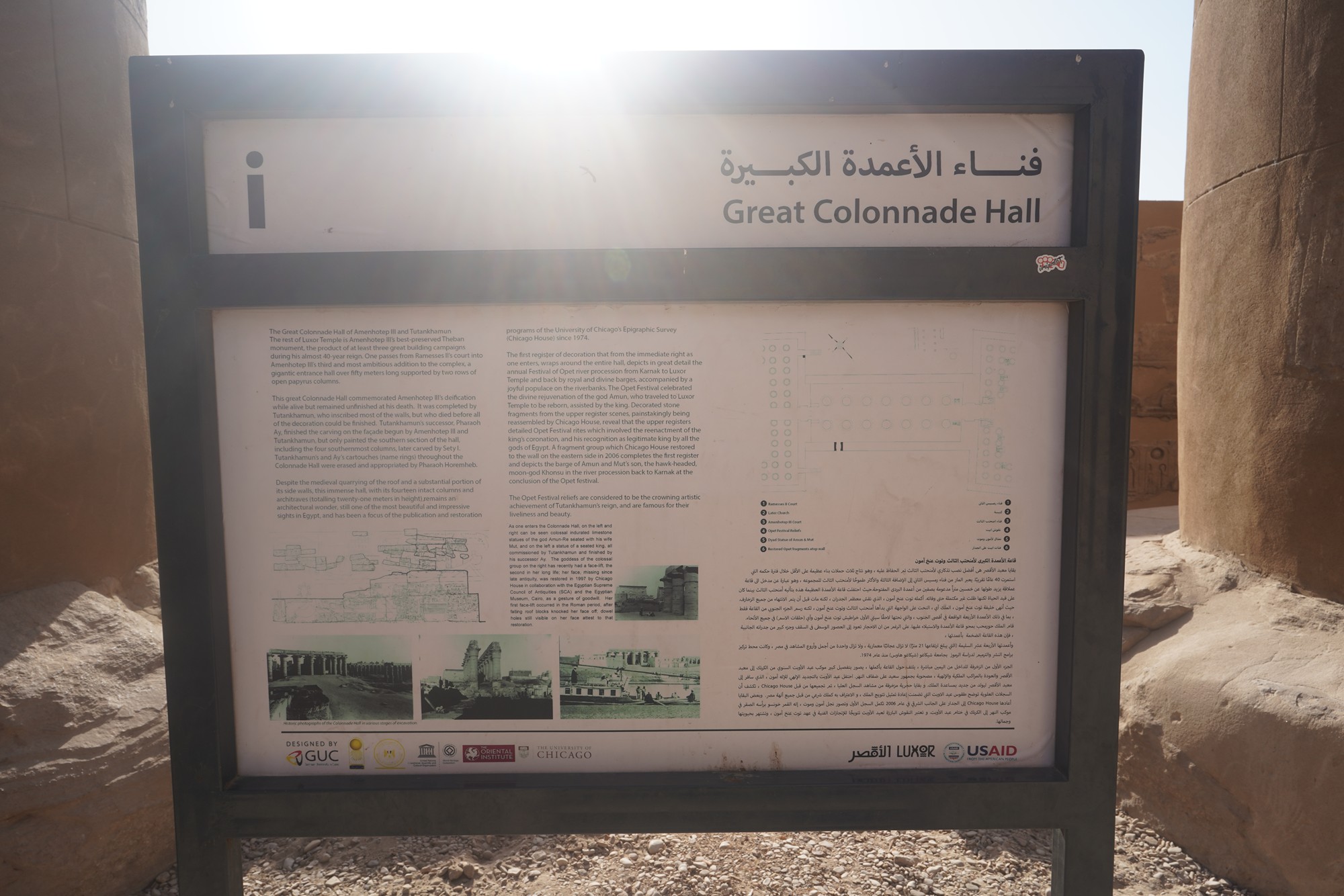
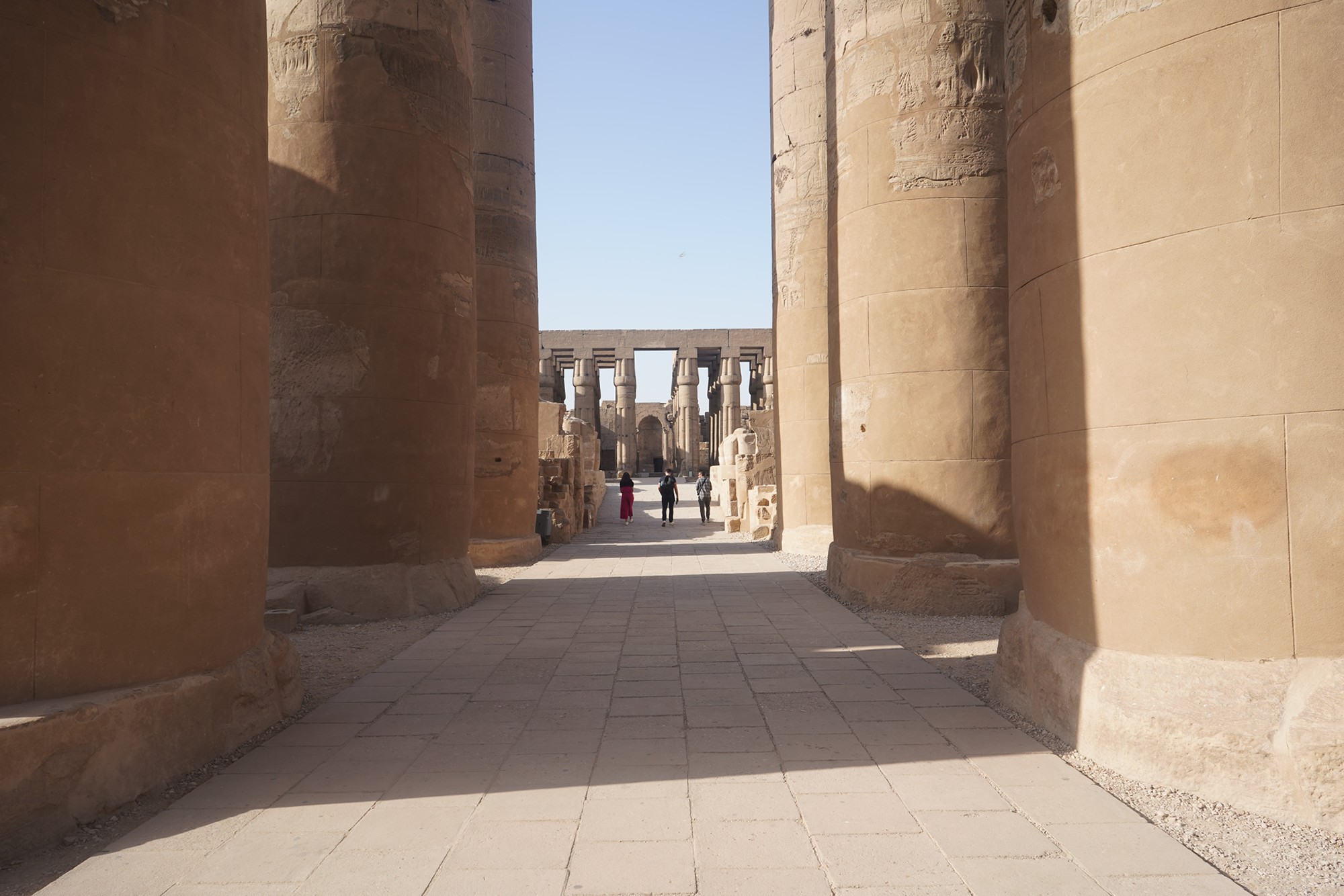

The second courtyard






Turned around and looked back

The front side


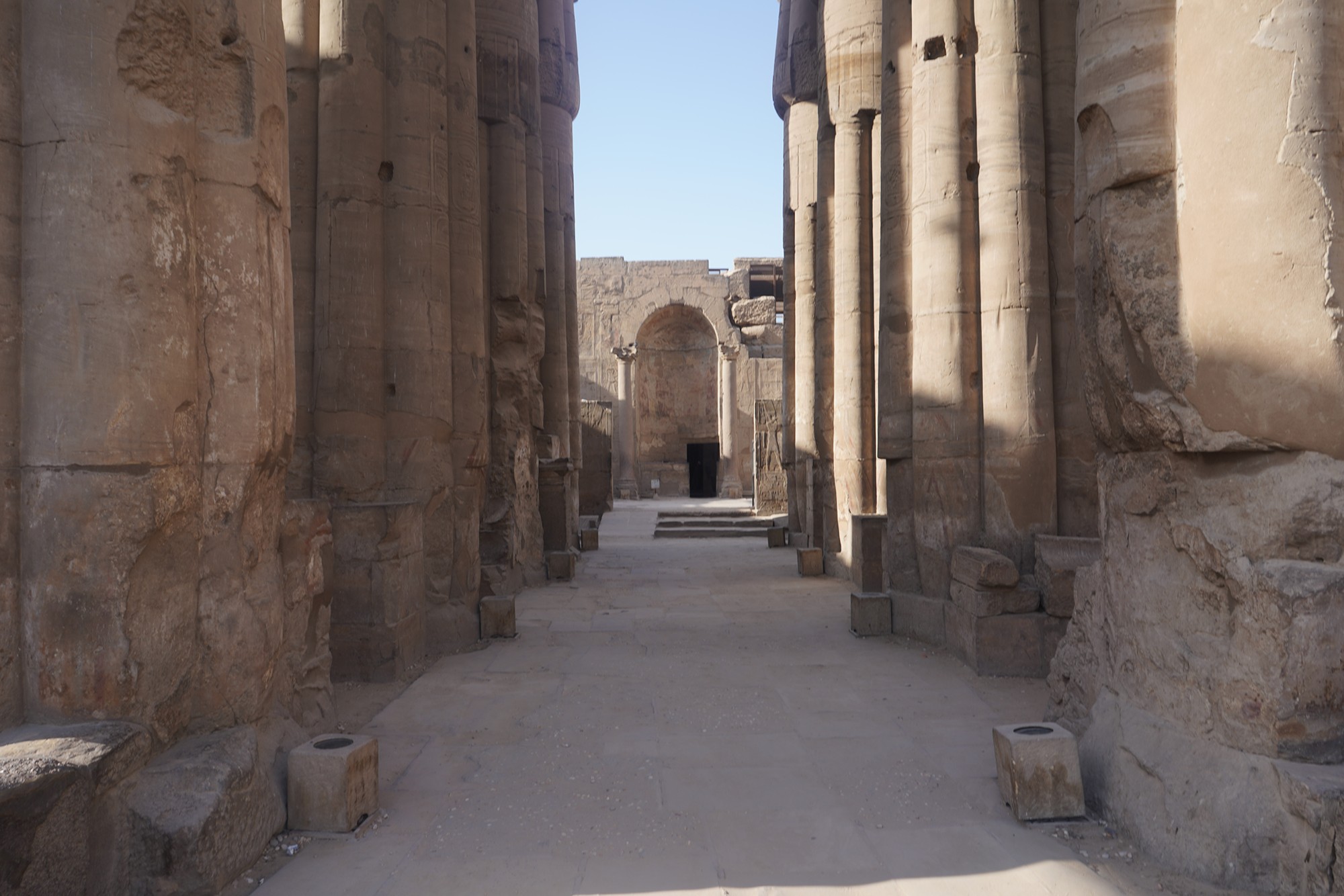
The door to the sanctuary







The left side leads to the outside


Back to the sanctuary



A small side room in the sanctuary


Came back to the main area in the sanctuary
The temple also has a hypostyle hall with columns arranged in a grid-like pattern. This hall was used for important religious rituals.


Near the one end of the temple
The innermost sanctuary, housing the sacred shrine, is located at the rear of the temple. It is where the cult statue of the deity to whom the temple was dedicated is located.

The left side

At the one end of the temple

I turned back and started walking toward the temple’s main entrance.



The right side has a door that leads to outside
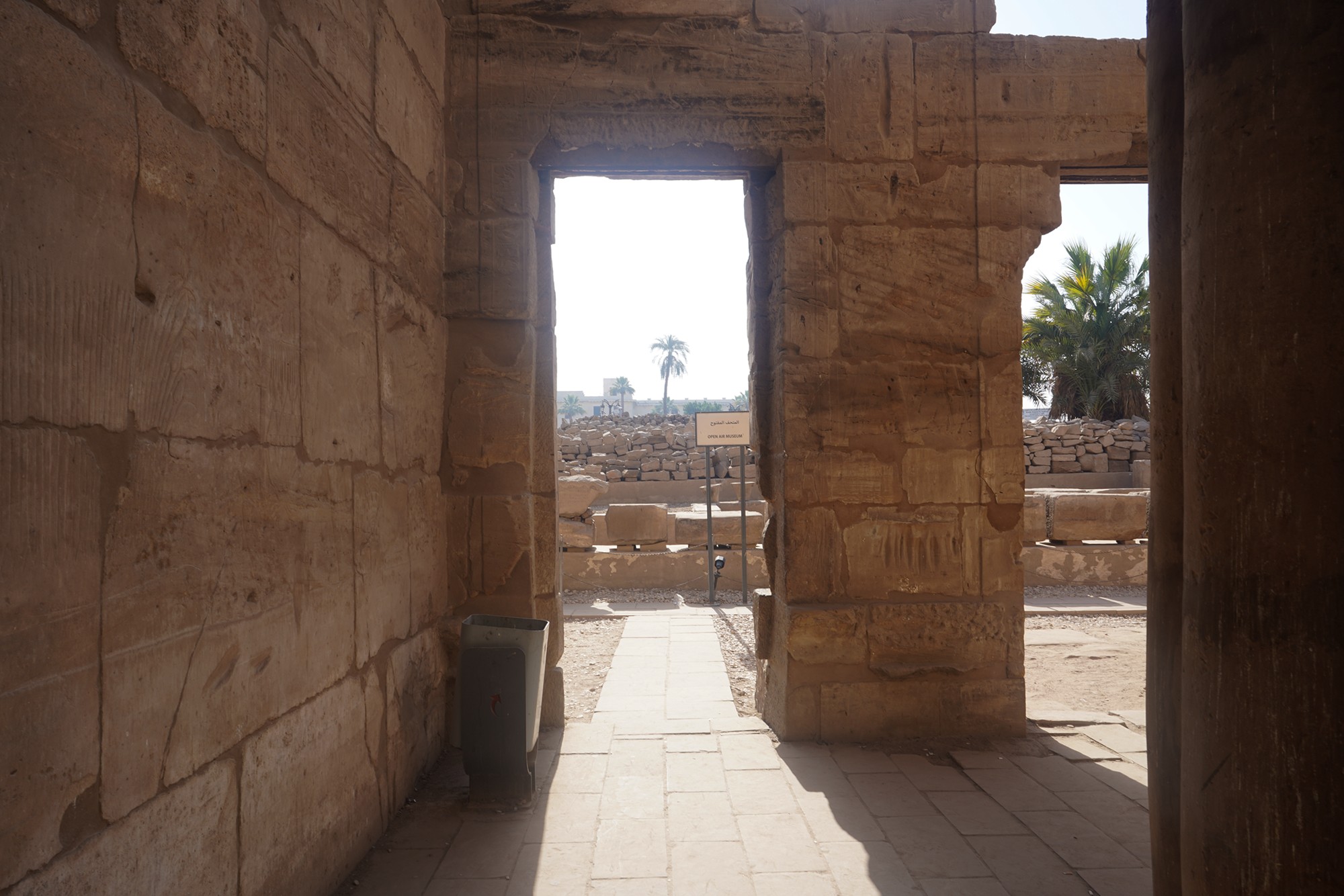
The outside



Back to the sanctuary




I kept going toward the main gate of the temple.

I came back to the second courtyard.



The column hallway




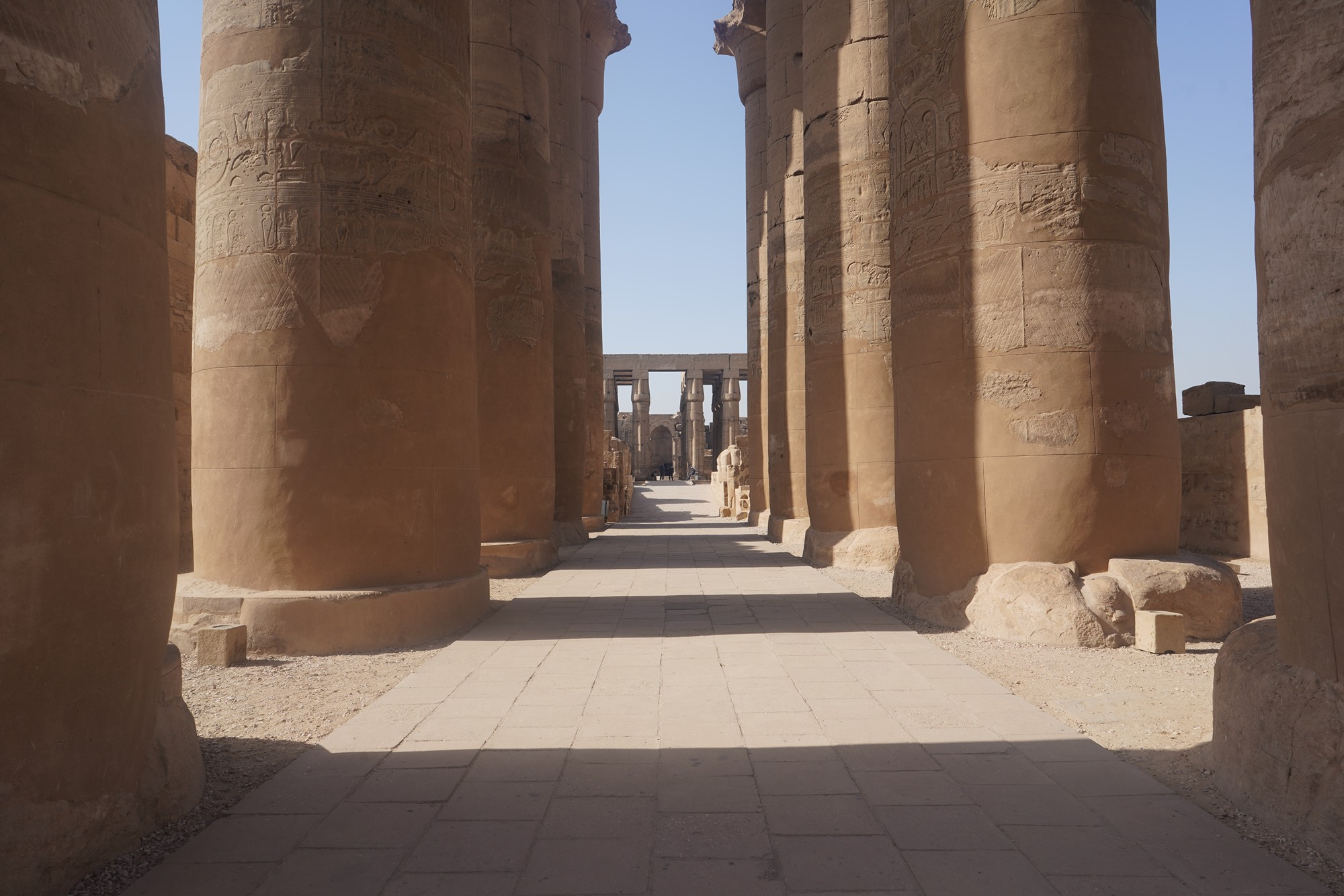

The first courtyard





Turned around and looked back







Turned around and looked back



Turned around and looked back

Today, Luxor Temple is a UNESCO World Heritage Site and a popular tourist attraction, drawing visitors from around the world to marvel at its impressive architecture and historical significance.

